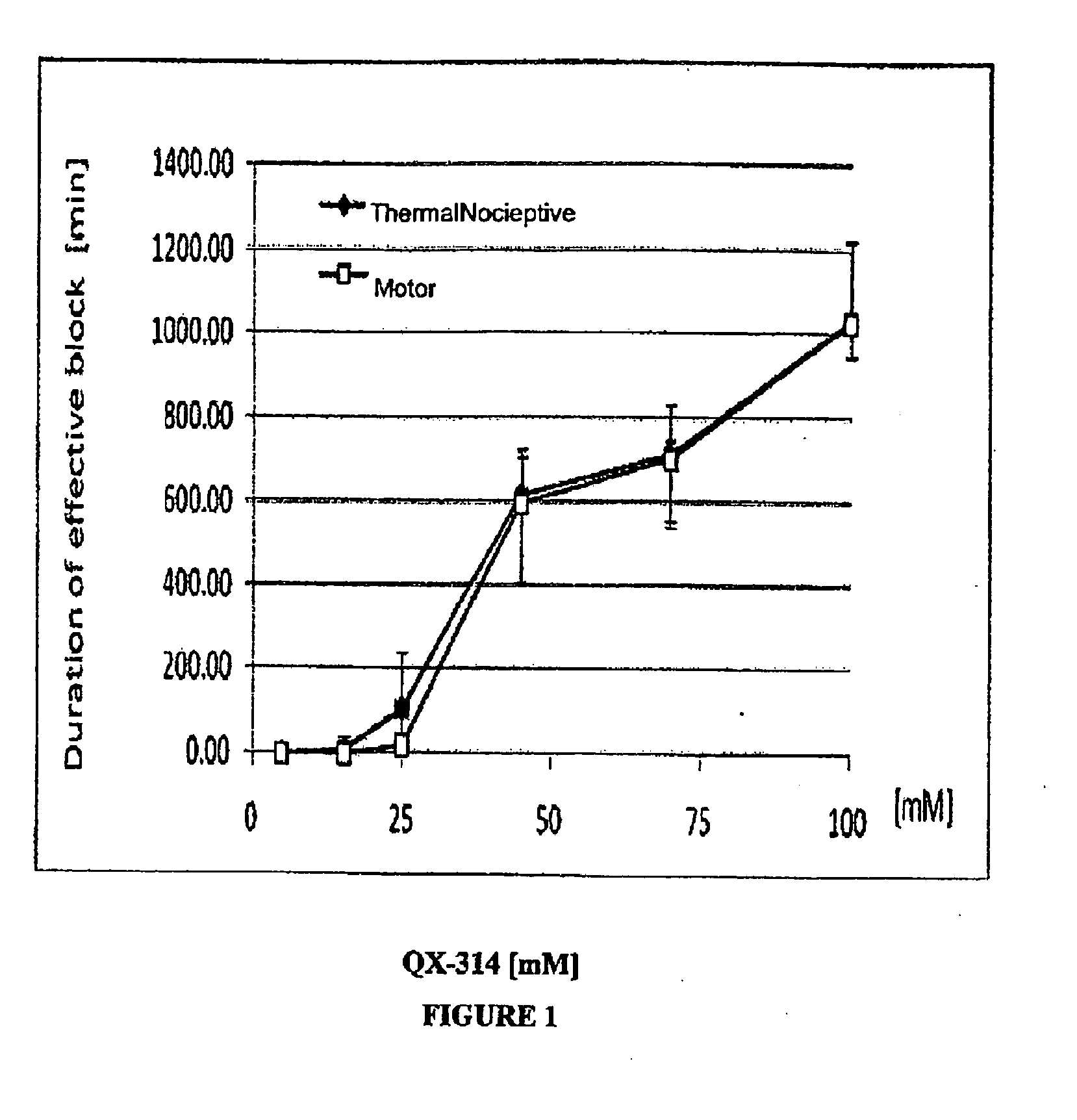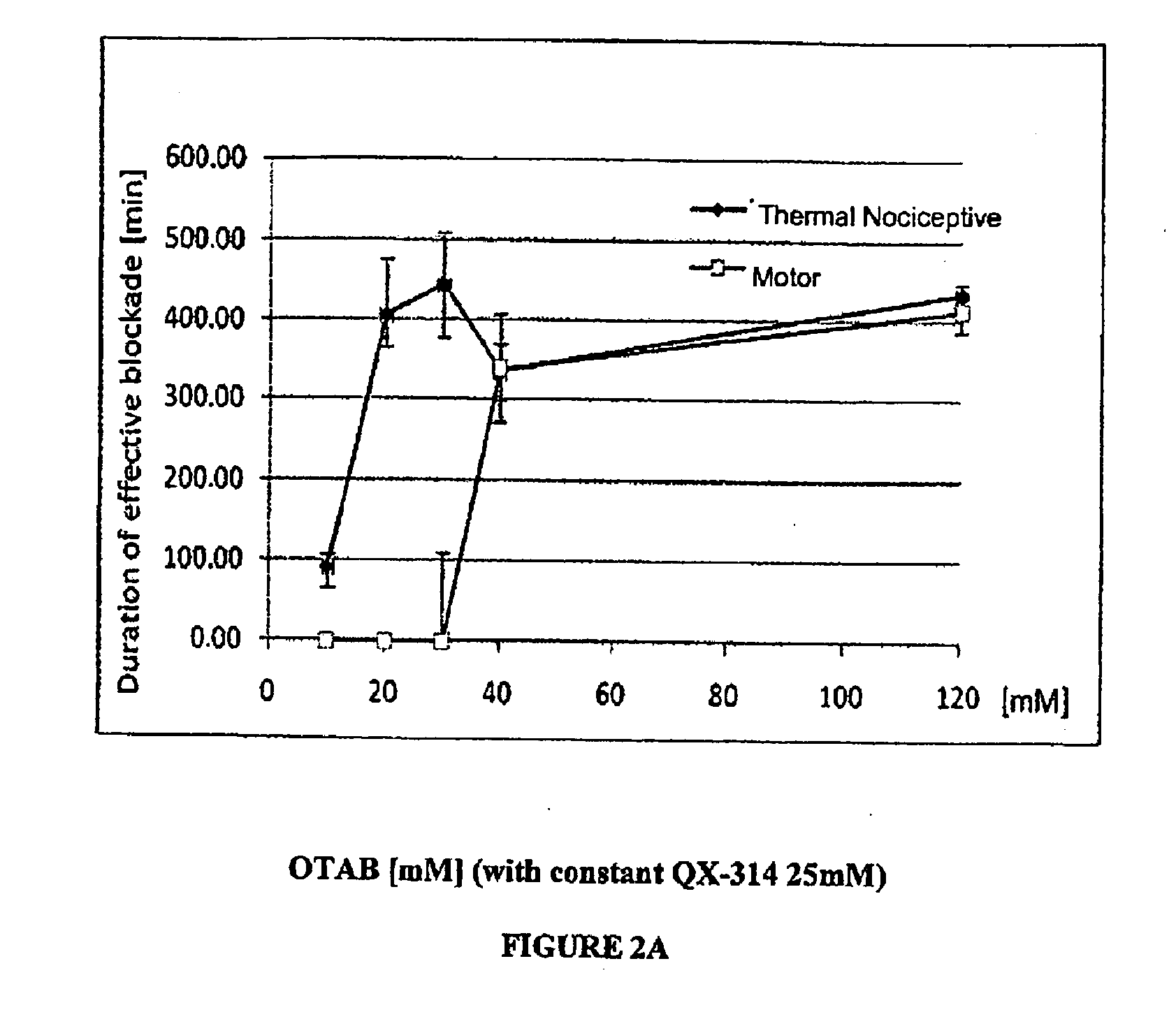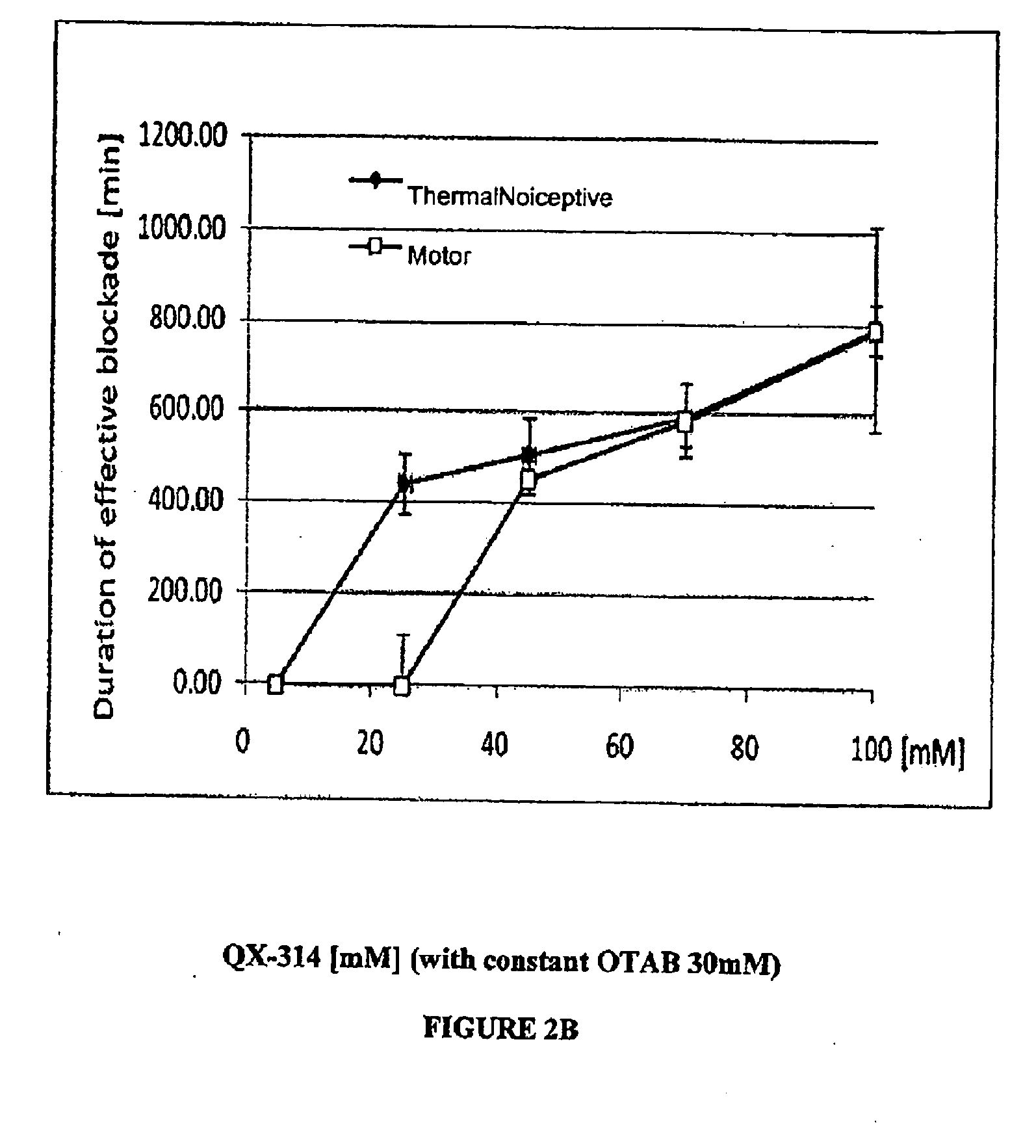Sensory-specific local anesthesia and prolonged duration local anesthesia
a local anesthesia and sensory technology, applied in the field of forms, can solve the problems of inhibiting the initiation and propagation of action potentials of nerve tissues, sensory and motor paralysis in the area enervated, etc., and achieve the effect of prolonging the duration of sensory block and greatly prolonging the block duration
- Summary
- Abstract
- Description
- Claims
- Application Information
AI Technical Summary
Benefits of technology
Problems solved by technology
Method used
Image
Examples
example 1
Effect of a Cationic Surfactant on the Duration and Selectivity of Nerve blockade by a Local Anesthetic.
[0097]Materials and Methods:
[0098]Animal Care
[0099]Young adult male Sprague-Dawley rats (350-420 g) were obtained from Charles River Laboratories (Wilmington, Mass.) and housed in groups of two per cage on a 6 a.m. to 6 p.m. light / dark cycle. All animals were cared for in accordance with protocols approved institutionally and nationally.
[0100]Chemical Enhancers & Solution Preparation
[0101]QX-314 and octyltriethylammonium bromide (OTAB) (Sigma) solutions were prepared in saline individually and in combination with each enhancer the night before scheduled injections.
[0102]Sciatic Blockade Technique
[0103]Animals were cared for in compliance with protocols approved by the Massachusetts Institute of Technology (MIT) Committee on Animal Care, in conformity with the NIH guidelines for the care and use of laboratory animals (NIH publication #85-23, revised 1985). Rats were anesthetized us...
example 2
Effects of Anionic and Non-Ionic Surfactants on the Duration and Selectivity of Nerve Blockade by a Local Anesthetic
[0116]Materials and Methods:
[0117]Methods were as described in Example 1.
[0118]Results:
[0119]Effect of TWEEN 20 on Nerve Blockade Using QX-314
[0120]In order to investigate whether or not this sensory specific phenomenon is exclusive to the cationic OTAB, two additional surfactants from different families (anionic and non-ionic) were chosen. When co-injected with QX-314 (25 mM), TWEEN® 20 (polysorbate 20) (a non-ionic CPE) was shown to have a window of concentrations in which a sensory specific nerve blockade is observed. This “window” is between 0.35% and 1% TWEEN® 20 with the maximum sensory specificity at 0.5% giving a median of 269 minutes of sensory blockade and 0 minutes of motor blockade (FIG. 3A). The duration of this sensory blockade is more than twice as long as the duration of sensory blockade from 25 mM QX-314 alone (107 min) (FIG. 1) and is about half as lo...
example 3
Demonstration of Selective Block with OTAB and QX-222
[0129]Materials and Methods
[0130]To establish that the selective block could be obtained with other local anesthetics, the methods of example 1 were performed using 100 mM QX-222 and 30 mM OTAB, and compared to the results obtained using 100 mM QX-222 and 30 mM OTAB.
[0131]Results
[0132]The results are shown in FIG. 5. Comparable selective thermal nociceptive blockade as compared to motor blockade was obtained with both QX-314 and QX-222 in combination with OTAB.
PUM
| Property | Measurement | Unit |
|---|---|---|
| melting point | aaaaa | aaaaa |
| amphiphilic | aaaaa | aaaaa |
| pH | aaaaa | aaaaa |
Abstract
Description
Claims
Application Information
 Login to View More
Login to View More - R&D
- Intellectual Property
- Life Sciences
- Materials
- Tech Scout
- Unparalleled Data Quality
- Higher Quality Content
- 60% Fewer Hallucinations
Browse by: Latest US Patents, China's latest patents, Technical Efficacy Thesaurus, Application Domain, Technology Topic, Popular Technical Reports.
© 2025 PatSnap. All rights reserved.Legal|Privacy policy|Modern Slavery Act Transparency Statement|Sitemap|About US| Contact US: help@patsnap.com



